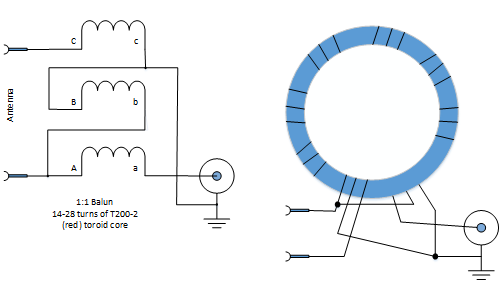The centre of a dipole antenna has an impedance of around 72 ohms, which is reasonably close to the 50 ohm impedance of modern transceivers. However, each of the two "arms" of a dipole radiate - neither is grounded. Consequently, you shouldn't just feed a dipole from coax: you should use a balun.
A balun is simply an RF transformer. There are several types of balun, and a lot of argument about which of them really work: however to feed a simple dipole, what you need is a 1:1 current balun. Nowadays there are made by winding copper wire onto a ferrite or dust iron core.
To cover the HF bands, you can make a simple balun using a T200-2 Dust iron Toroidal core and enamelled copper wire. You will need to use reasonably large diameter wire - e.g. 16SWG. This core and wire size will cope with 100W SSB. If in doubt, transmit for a few seconds and see if the core gets warm: if so, you need a larger core.
A balun is a relatively broadband device: however the number of turns used affects the frequency range the balun will operate efficiently over. With too few turns, the core won't magnetise sufficiently at low frequencies. With too many turns, it will become reactive at high frequencies. Around 17 turns of enamelled copper wire gives a reasonable compromise.
It's important to get the windings joined together correctly - look carefully at the diagram!

With a switched dipole I'm able to get a VSWR at mid-band of 1.2:1 or less except on 10 metres, where the mid-band VSWR is around 1.6:1. This is because the balun is at its upper frequency limit. It's possible that a ferrite one may improve that.
